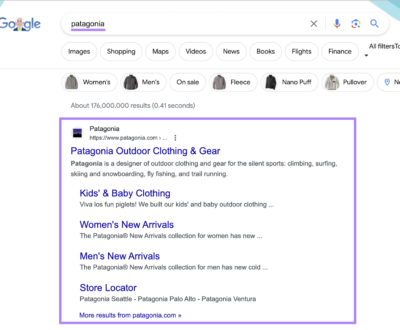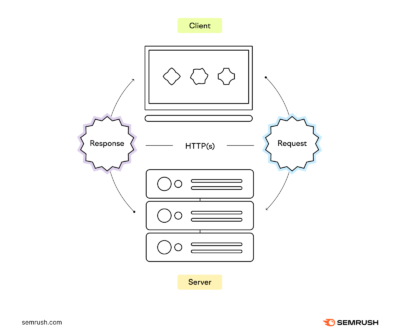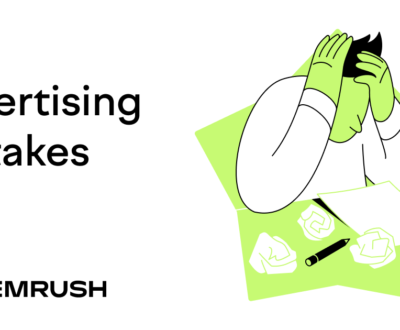[ad_1]
There are many methods you possibly can enhance your Shopify web site’s search engine optimisation.
However the most effective issues you are able to do is leverage your sitemap. Which is particularly straightforward in case you have a Shopify web site.
On this publish, we’ll go over discover and submit your Shopify sitemap. And a technique to maintain your sitemap up to date and optimized for higher search engine visibility.
Let’s begin with the fundamentals.
What Is a Sitemap & Why Does Your Shopify Retailer Want One?
A sitemap is a file that lists all of the necessary pages in your web site.
It acts as a listing for search engine crawlers (and for customers, relying on the format) to assist them simply navigate your web site. And guarantee they perceive your web site’s structure and the relationships between the pages.
Listed below are the 2 major forms of sitemaps:
- XML sitemap: A sitemap that’sused by search engine crawlers to find pages
- HTML sitemap: A sitemap that appears like an ordinary webpage with all necessary pages listed to assist customers simply navigate the web site
XML sitemaps present extra details about URLs, reminiscent of once they have been final up to date and whether or not there’s an alternate model.
Right here’s an XML sitemap instance:
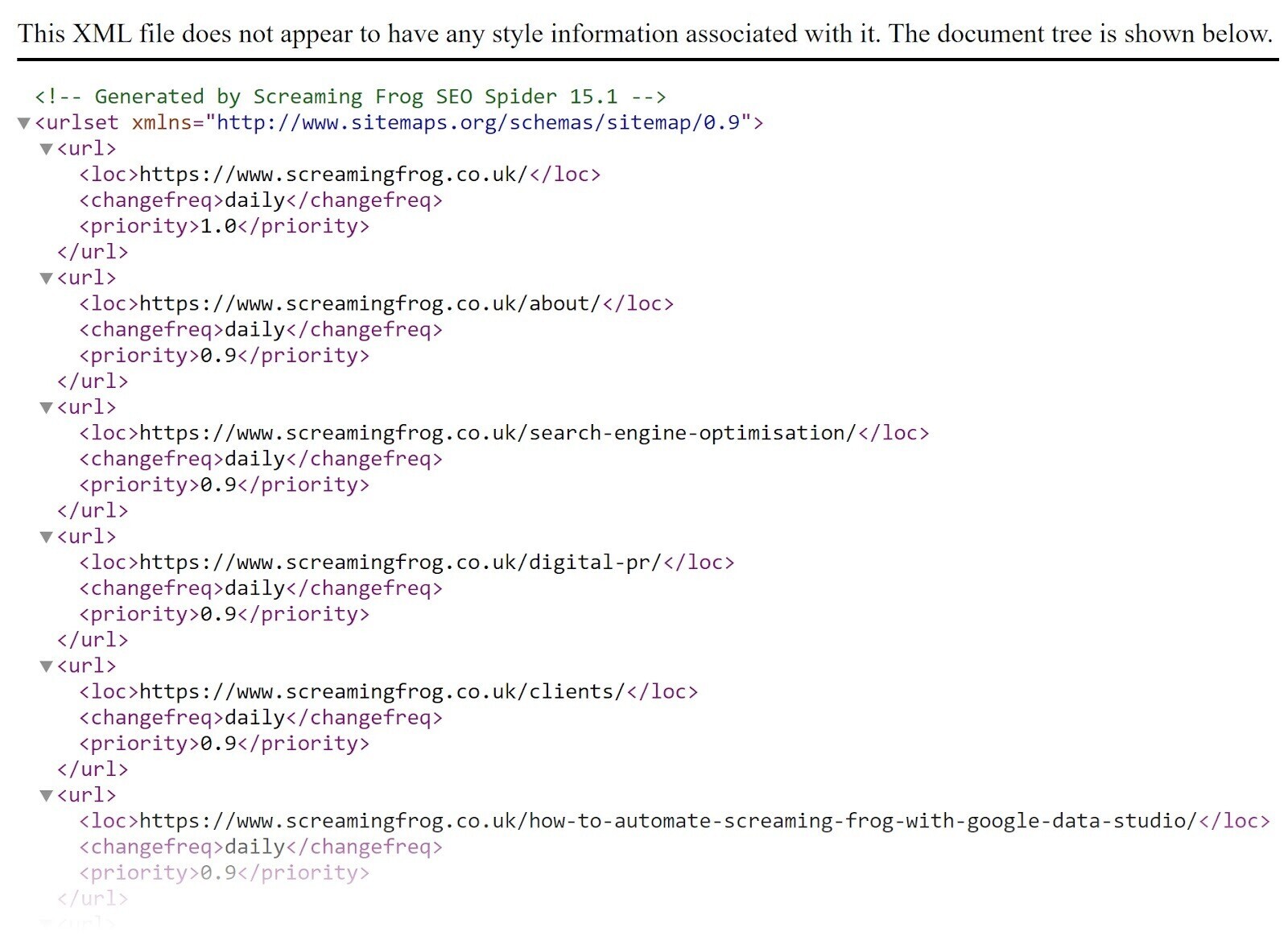
And right here’s an HTML sitemap instance.
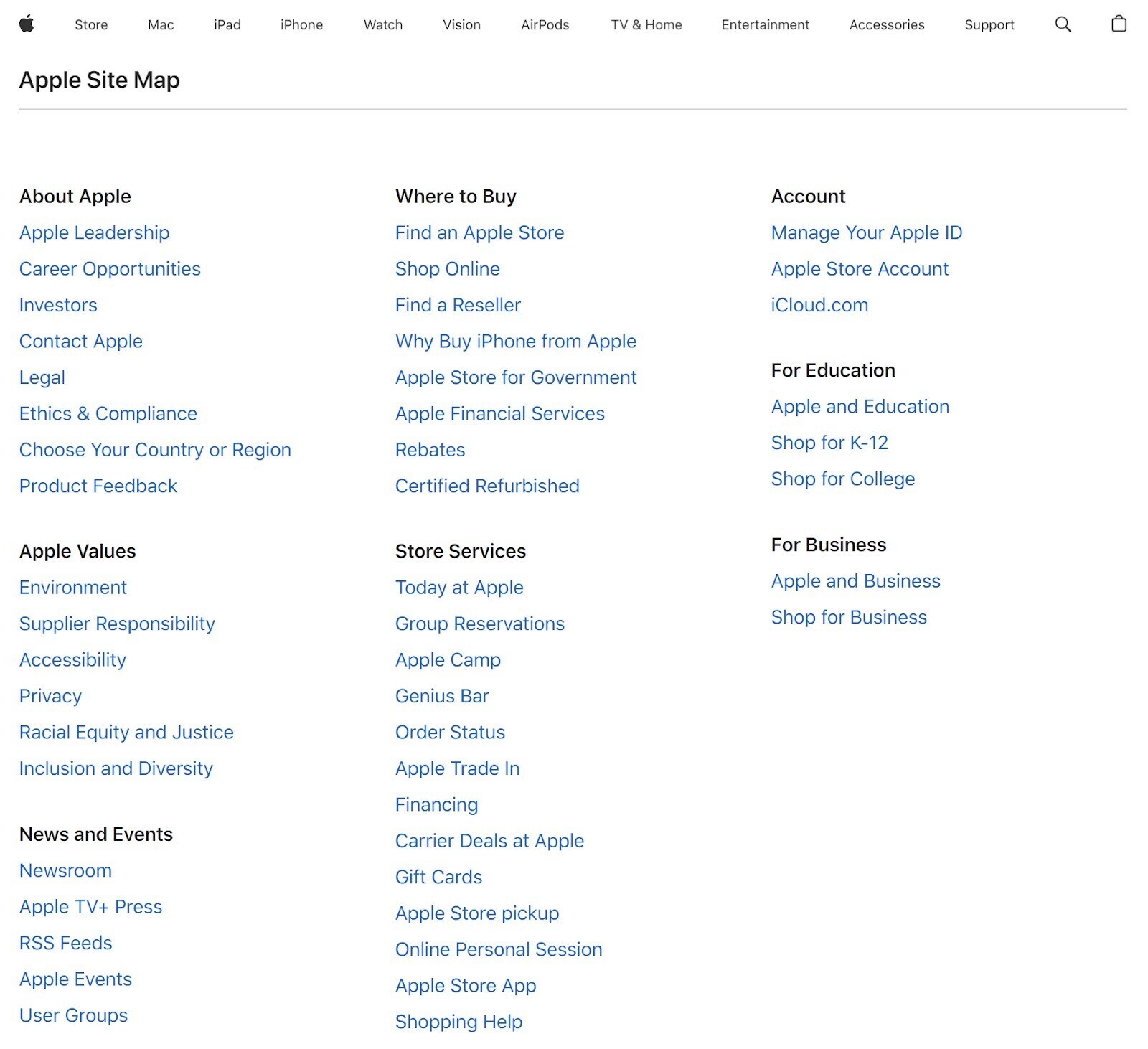
HTML sitemaps also can enhance your inner linking. Which contributes to your general search engine optimisation efficiency.
However for many Shopify shops, the header navigation bar accommodates hyperlinks to all necessary pages. That means there’s not often any sensible want for an HTML sitemap in case you have a Shopify web site.
So, we’ll focus solely on XML sitemaps for the remainder of this text.
Do You Have to Know Create a Sitemap in Shopify?
Fortunately, there’s no have to dig into add a sitemap in Shopify. As a result of anybody who makes use of the platform already has an XML sitemap.
The Shopify platform auto-generates and modifies your XML sitemap. And likewise helps region-specific sitemaps for worldwide websites.
Can You Edit Your Auto-Generated Shopify Sitemap?
Shopify-created sitemaps can’t sometimes be modified.
They’re routinely generated and modified primarily based in your retailer’s content material. And Shopify is restrictive about altering them.
You should utilize third-party Shopify apps to edit the present Shopify XML sitemaps. And different exterior instruments to create one from scratch. However we’ll get into these choices later.
Discover Your Shopify Sitemap
Your Shopify XML sitemap is in your website’s root listing.
Merely go to in a browser to entry your Shopify XML sitemap. (Simply exchange “instance.com” together with your Shopify retailer’s area.)
For instance, right here’s clothes model Hiut Denim’s Shopify XML sitemap:
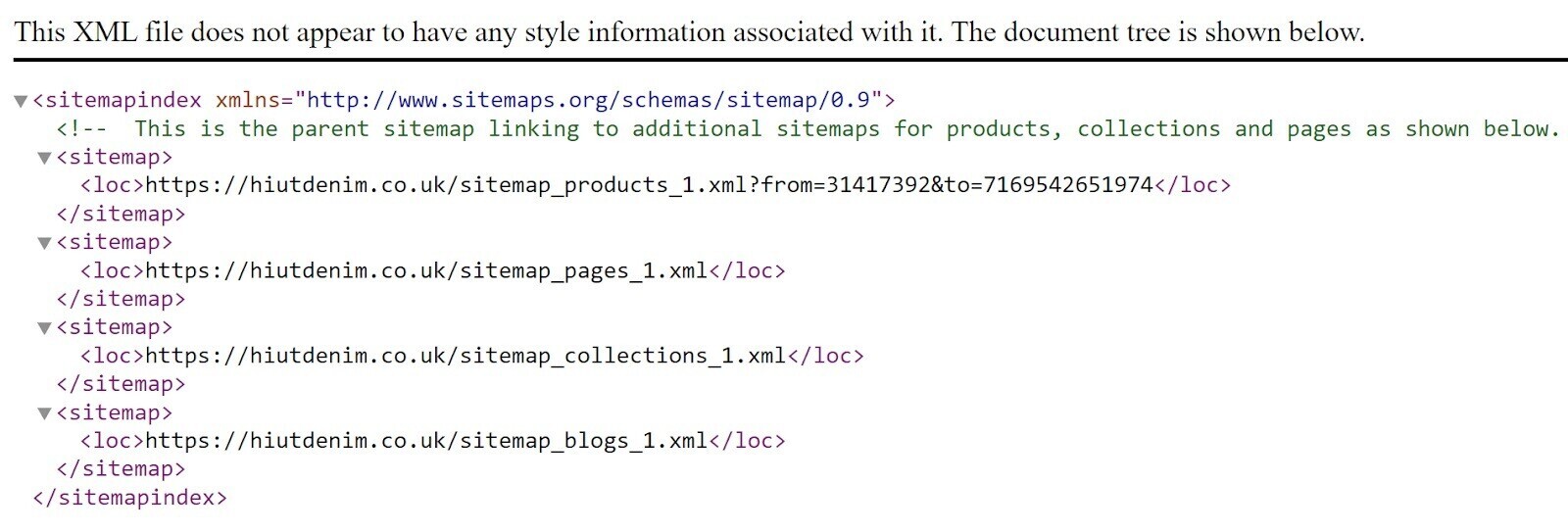
That is the primary sitemap. Which is named the guardian sitemap or sitemap index. And it hyperlinks to all of the youngster sitemaps, which include the URLs of the pages.
You may submit your sitemap index to serps as an alternative of submitting every separate sitemap. As a result of serps can entry these particular person sitemaps by means of the hyperlinks within the sitemap index.
Right here’s what one among Hiut Denim’s youngster sitemaps appears like:
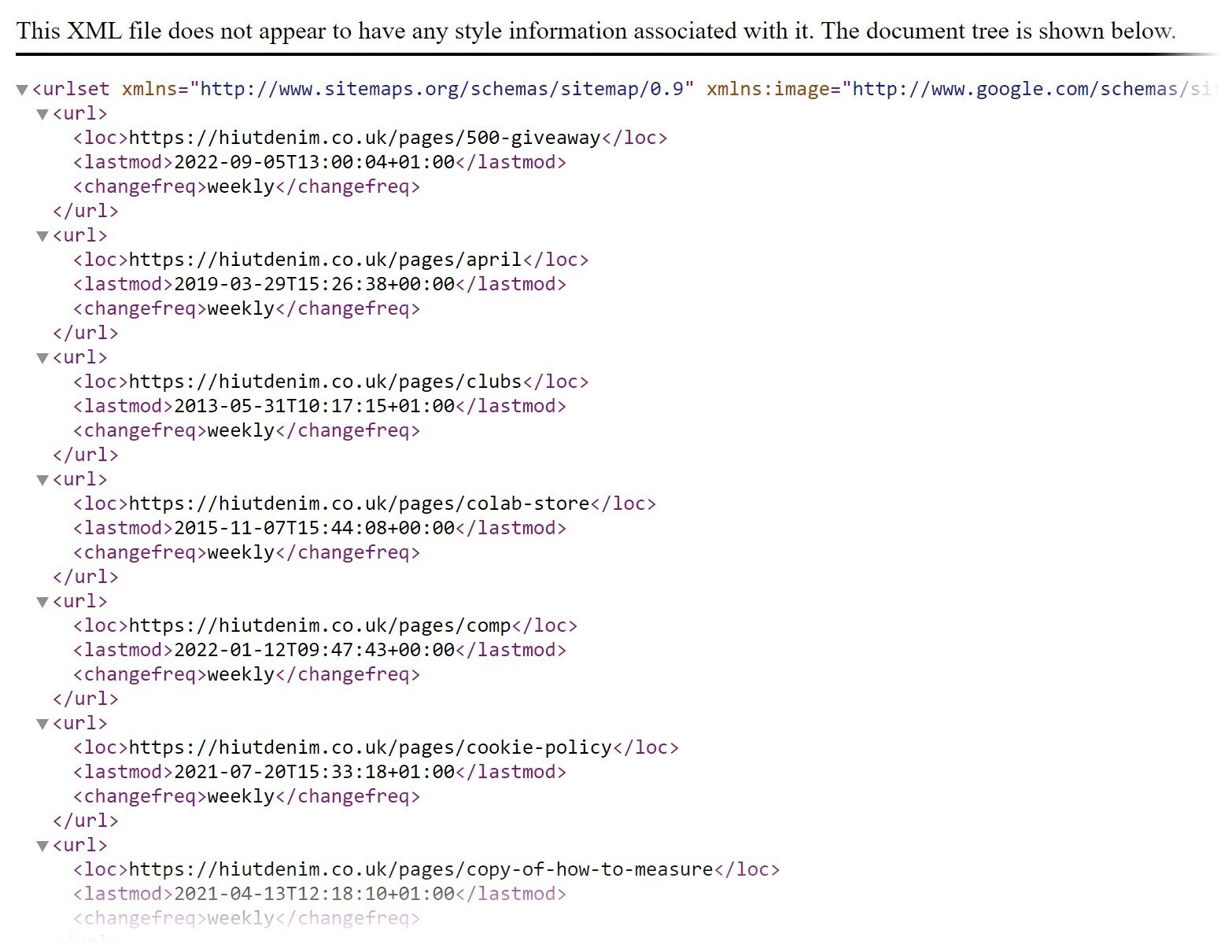
Understanding the Contents of a Shopify Sitemap
The Shopify sitemap.xml file is a sitemap index. Which accommodates hyperlinks to your retailer’s different sitemaps.
It accommodates sitemaps for the next:
- Merchandise (/sitemap_products_1.xml): accommodates URLs of all of the product pages and their media
- Collections (/sitemap_collections_1.xml): accommodates URLs of all the gathering pages and their media
- Weblog posts (/sitemap_blogs_1.xml): accommodates URLs of all of the weblog posts and their media
- Pages (/sitemap_pages_1.xml): accommodates URLs of all different pages and their media
Every XML sitemap has a restrict of fifty,000 URLs. So, Shopify will routinely create extra ones if this restrict is exceeded.
Which means the following product sitemap can be sitemap_products_2.xml.
And right here’s what a Shopify product sitemap appears like:
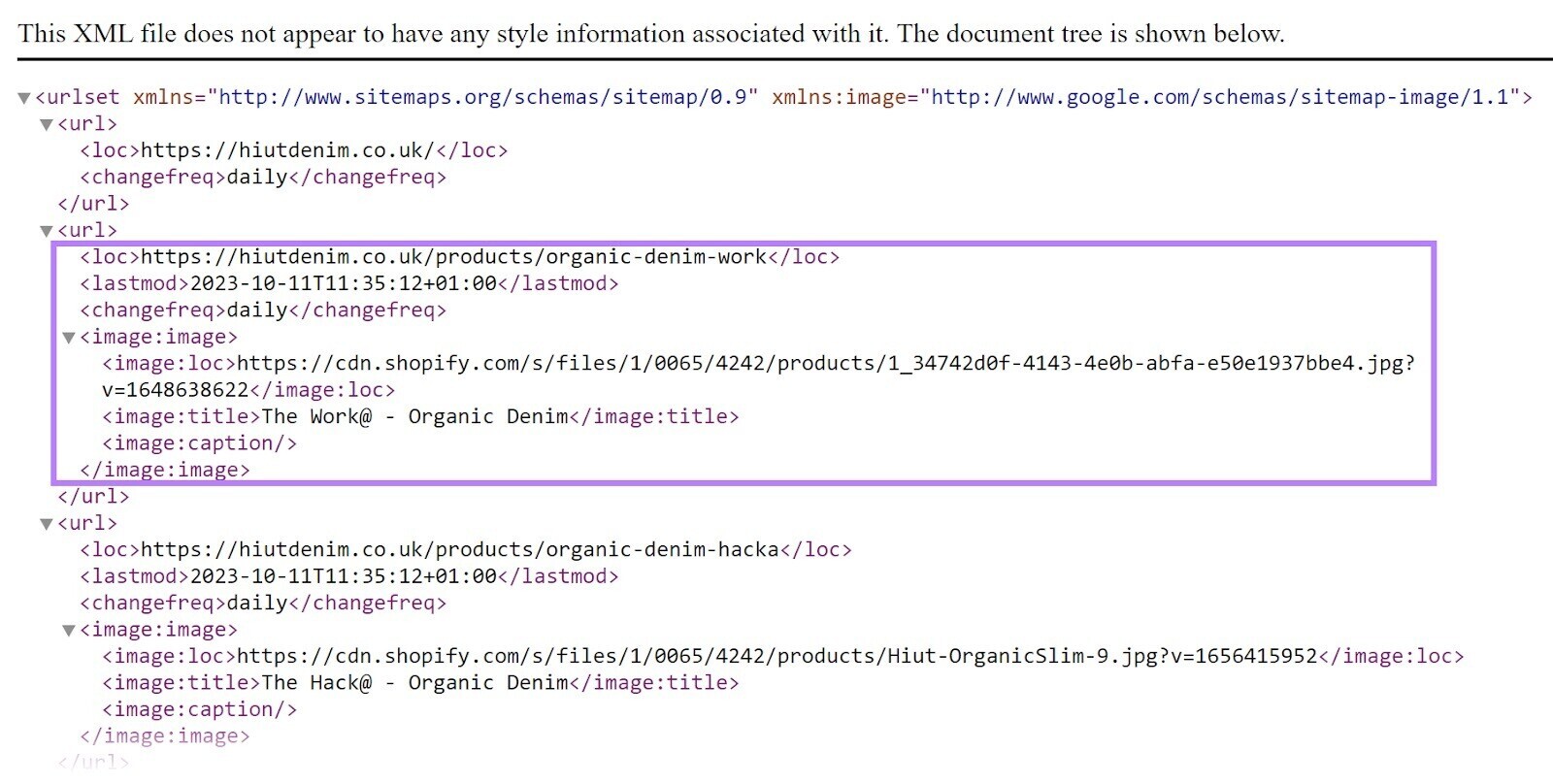
Within the sitemap, every URL is outlined by the <url> tag. Which accommodates the next data:
- <loc>: The situation (URL) of the webpage or picture file
- <lastmod>: The date and time when the content material was final modified
- <changefreq>: A sign of how typically the content material is more likely to change (e.g., each day, weekly, and many others.)
For the merchandise sitemap, every entry additionally accommodates an <picture:picture> tag for the product picture. It accommodates the next data:
- <picture:loc>: The situation (URL) of the product’s major picture
- <picture:caption>: The product picture’s caption, if current
- <picture:title>: The product picture’s title, if current
Add a Customized Sitemap to Shopify
There are just a few methods to customise your sitemap.
The primary is a workaround that includes creating and importing a static Shopify XML sitemap. Then making a 301 redirect to it from one among your webpages.
This provides you extra management over which pages are included. However you must be extraordinarily cautious to keep away from main search engine crawlers astray.
Listed below are some widespread errors to keep away from:
- Making a clean sitemap with none URLs
- Omitting necessary pages and content material
- Together with URLs with standing codes apart from 200 (i.e., redirects, 404 pages, and many others.)
- Together with non-canonical URLs (which means different variations)
- Exceeding the sitemap restrict (i.e., 50,000 URLs or 50 MB)
And be sure that the sitemap.xml is legitimate. That means it follows the sitemap protocol set by Sitemaps.org. For instance, the sitemap ought to:
- Start with <urlset> and finish with </urlset> tags
- Specify the namespace (protocol commonplace)
- Include <url> tag for every URL, with a <loc> tag inside it
You can even use apps to switch sitemaps. There are many them within the Shopify App Retailer.
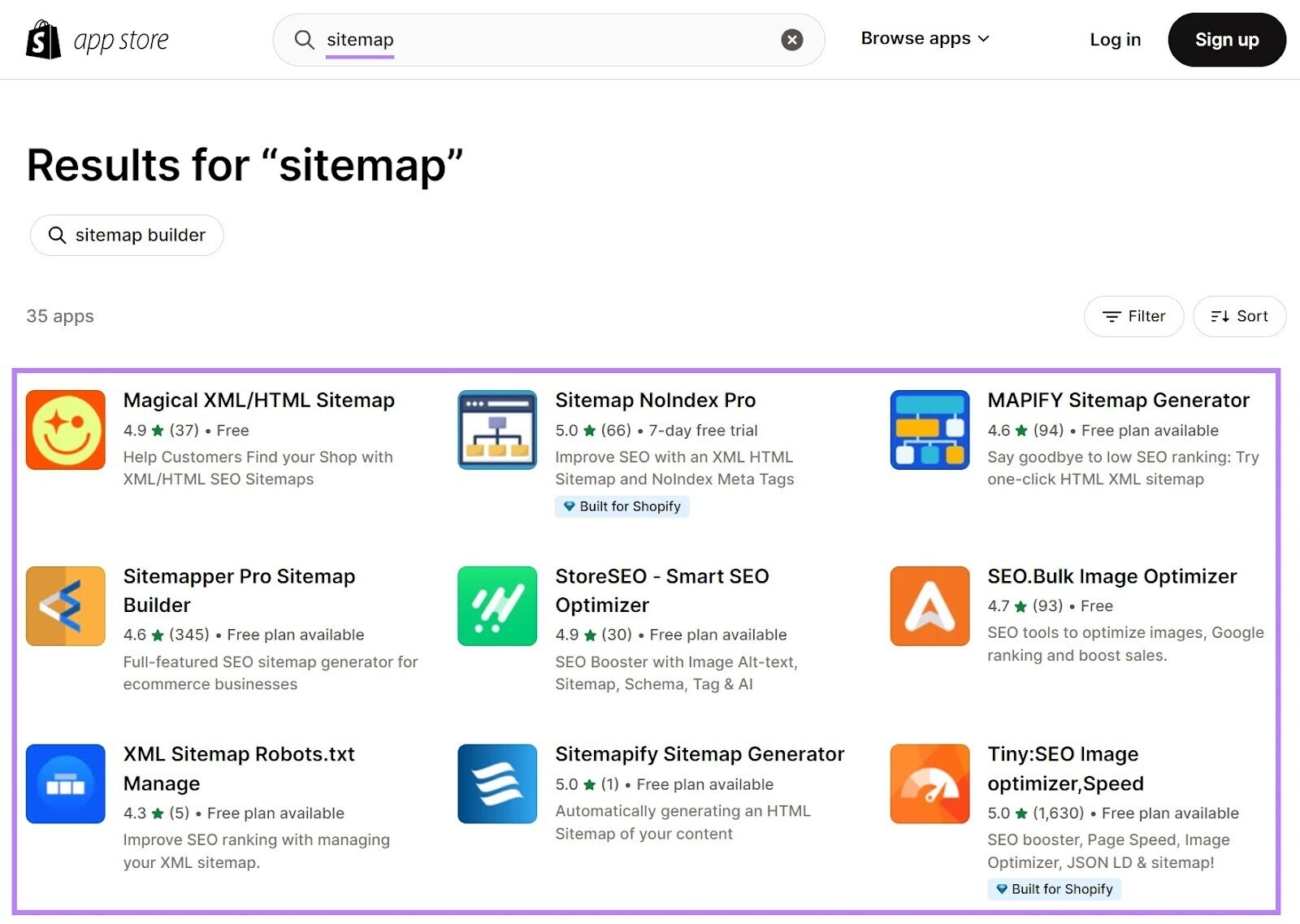
But it surely’s often higher to stay to the default sitemaps and settings.
Why? As a result of Shopify auto-updates the sitemaps recurrently, retaining them updated. And decreasing the chance of errors.
Submit Your Shopify Sitemap to Search Engines
Let’s go over submit a Shopify sitemap to Google and Bing.
Submit a Shopify Sitemap to Google
You may submit your Shopify sitemap by means of Google Search Console (GSC). However first, you’ll have to create a brand new property on your Shopify retailer and confirm it.
So as to add and confirm your Shopify retailer, begin by navigating to Google Search Console.
Right here, you possibly can confirm the property in two methods:
- Area: Covers all URLs and subdomains
- URL Prefix: Covers all of the URLs with the precise prefix
The URL Prefix methodology is best and best suited for Shopify. As a result of all of the URLs share the identical prefix (e.g., https://yourdomain.com/).
Within the “URL Prefix” area, enter your Shopify homepage URL and click on “Proceed.”
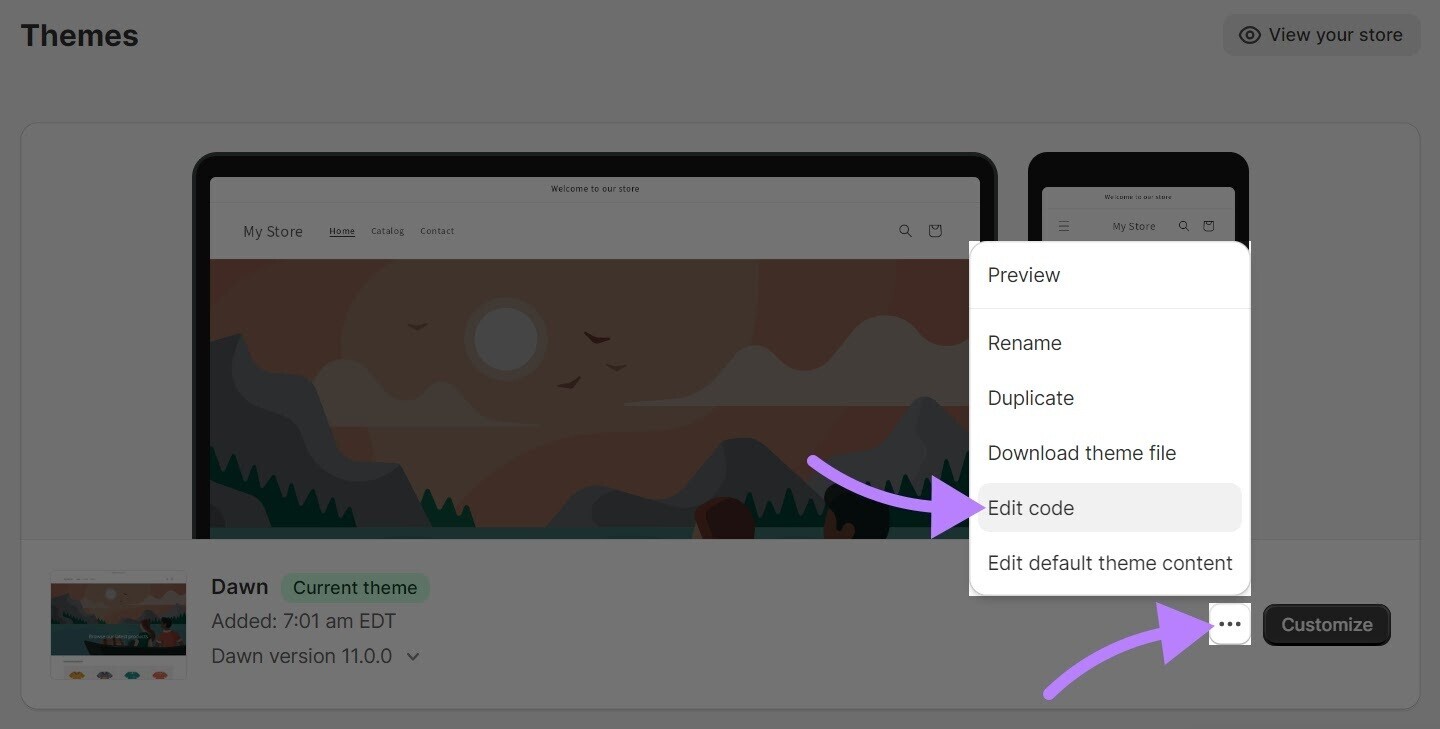
Now, you may have to confirm the positioning’s possession.
There are a number of methods to try this. For instance, you need to use present Google Analytics or Tag Supervisor setup. However the easiest possibility is so as to add a meta tag within the Shopify retailer.
To do that, broaden the “HTML tag” part and duplicate the meta tag.
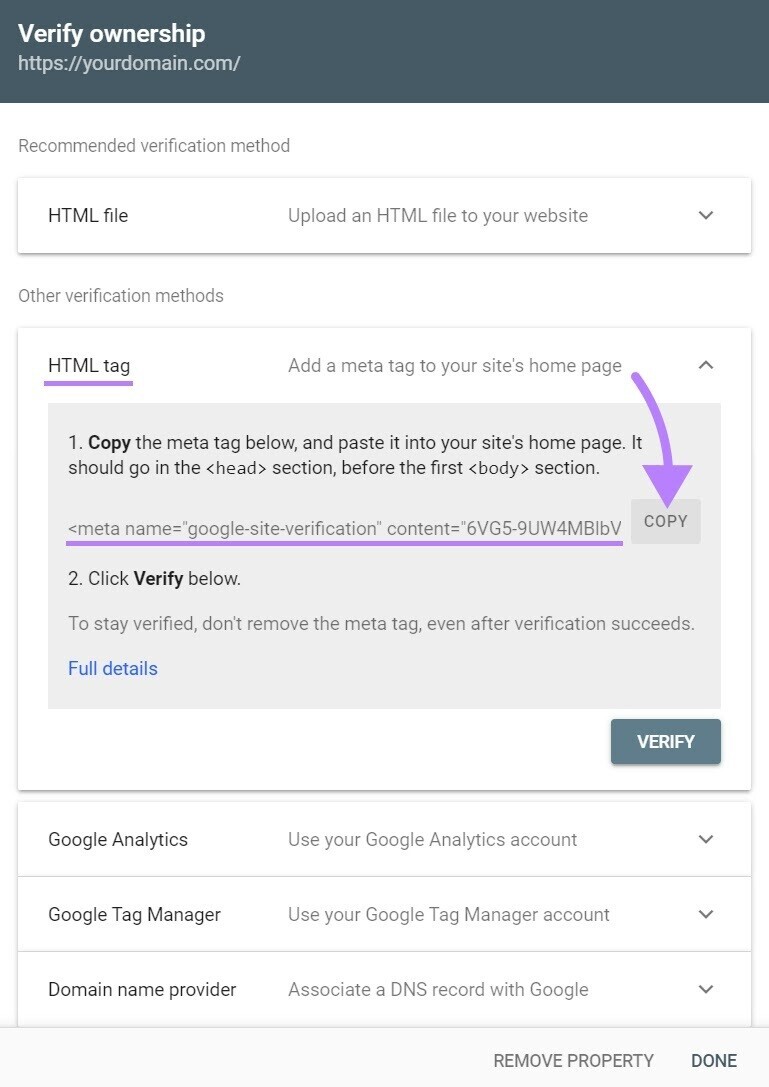
Now, go to your Shopify admin. Within the left-side menu, navigate to “Gross sales channels” > “On-line Retailer” > “Themes.”
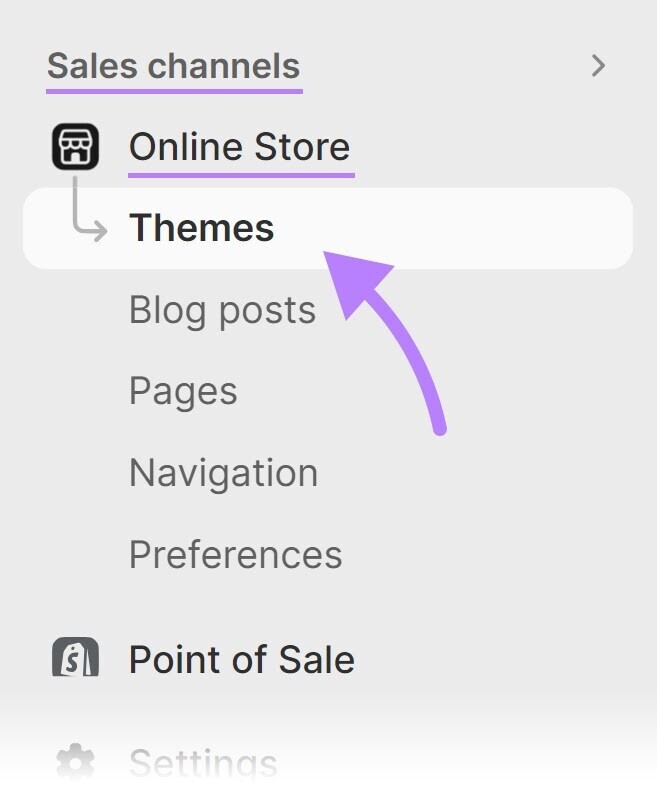
Within the Shopify themes, click on on the three dots beside the “Customise” button to open the menu. And click on “Edit code.”

Open the theme.liquid file beneath the “Structure” drop-down menu.
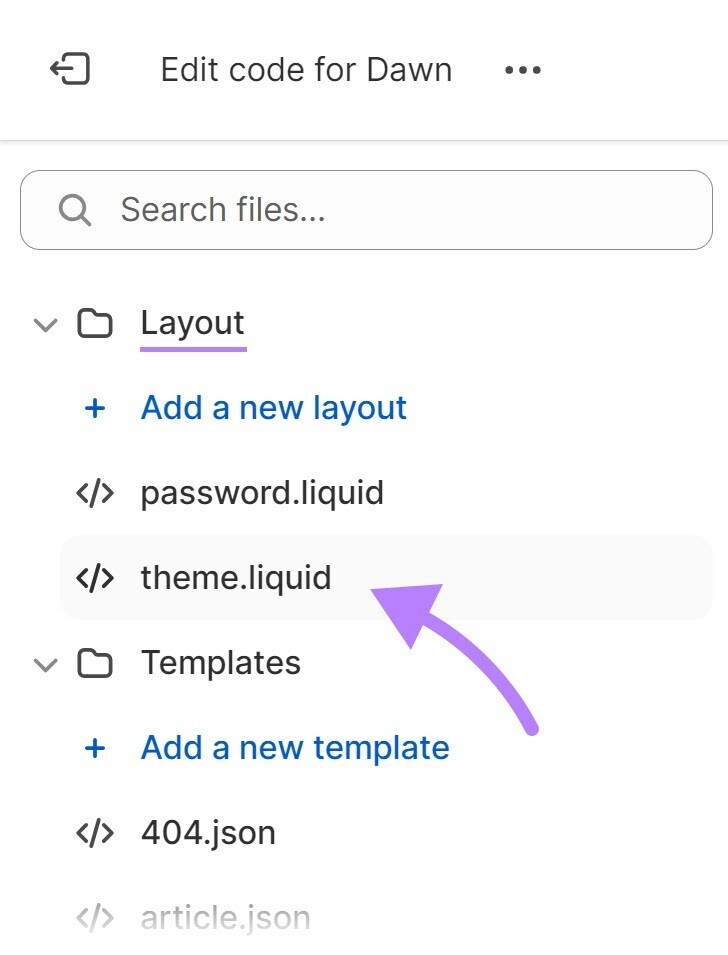
When you’re within the Shopify theme.liquid file, paste the Google search console website verification code contained in the <head> tag as proven under.
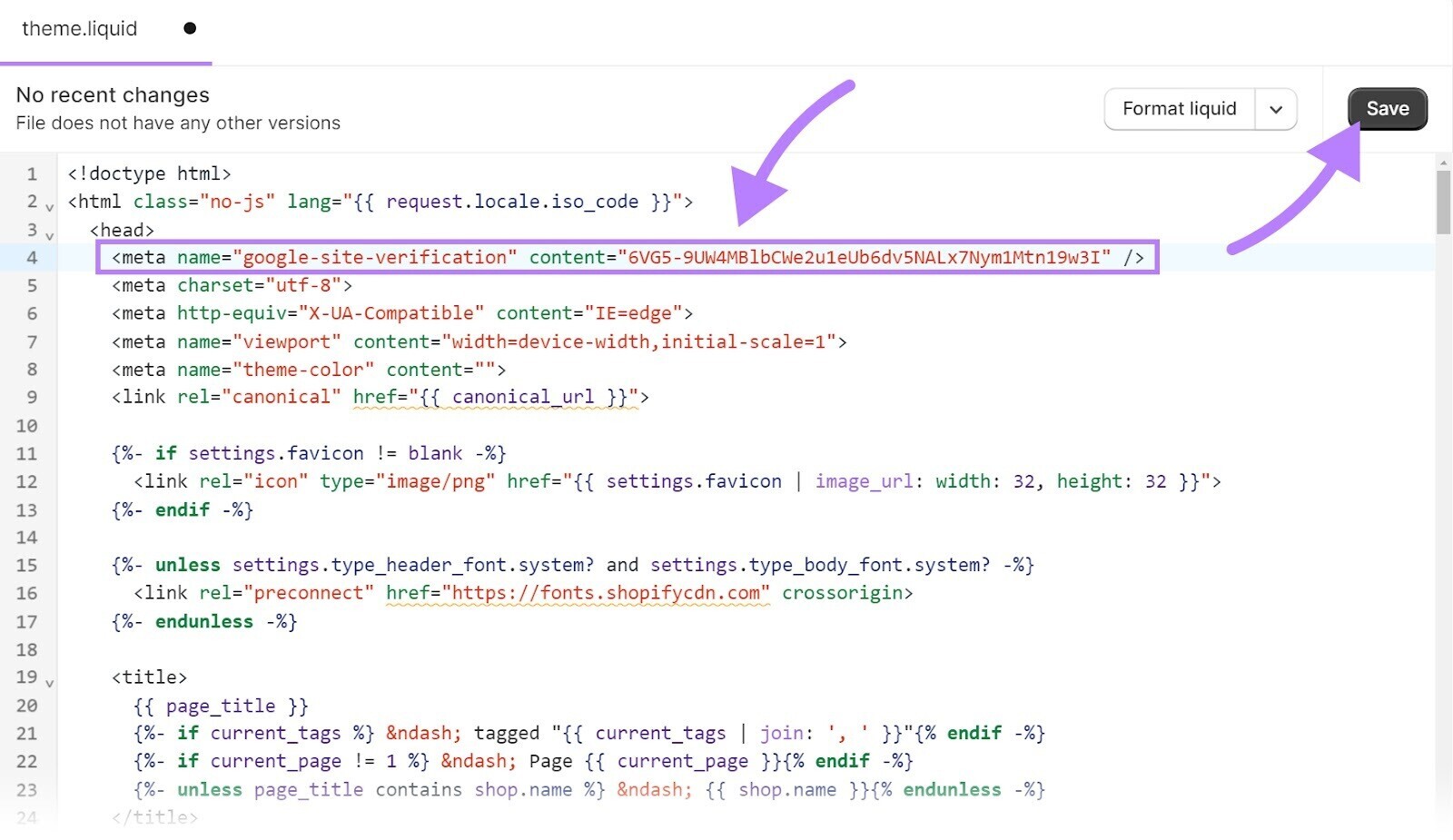
And click on “Save”on the high in the precise nook.
Observe: Making modifications to your theme file can result in critical web site points if you happen to make errors. In case you’re uncomfortable with this step, attain out to a developer who might help.
Now, you’ll have to return to the Google Search Console setup and confirm the meta tag.
Click on the “Confirm” button contained in the “HTML tag” part from the place you copied the code.
You’ll get a affirmation message as soon as the verification is full. When you’ve efficiently arrange your Shopify website in Google Search Console, you possibly can see its presence on Google and monitor its efficiency.
Now you can submit your sitemap by going to “Indexing” > “Sitemaps” in GSC.
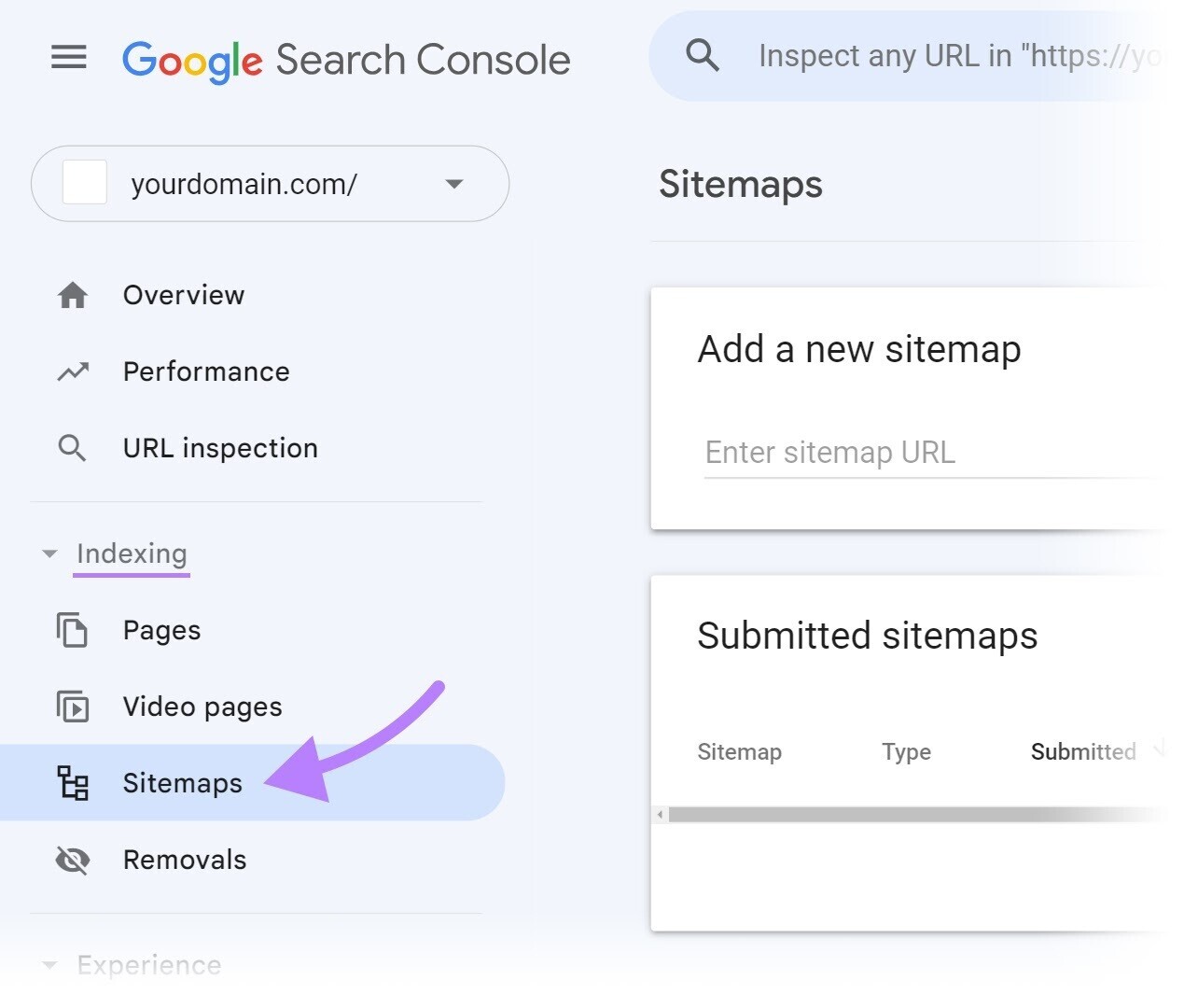
Enter the sitemap tackle beneath the “Add a brand new sitemap” part and click on “Submit.”

When your submission is profitable, you’ll get this message.
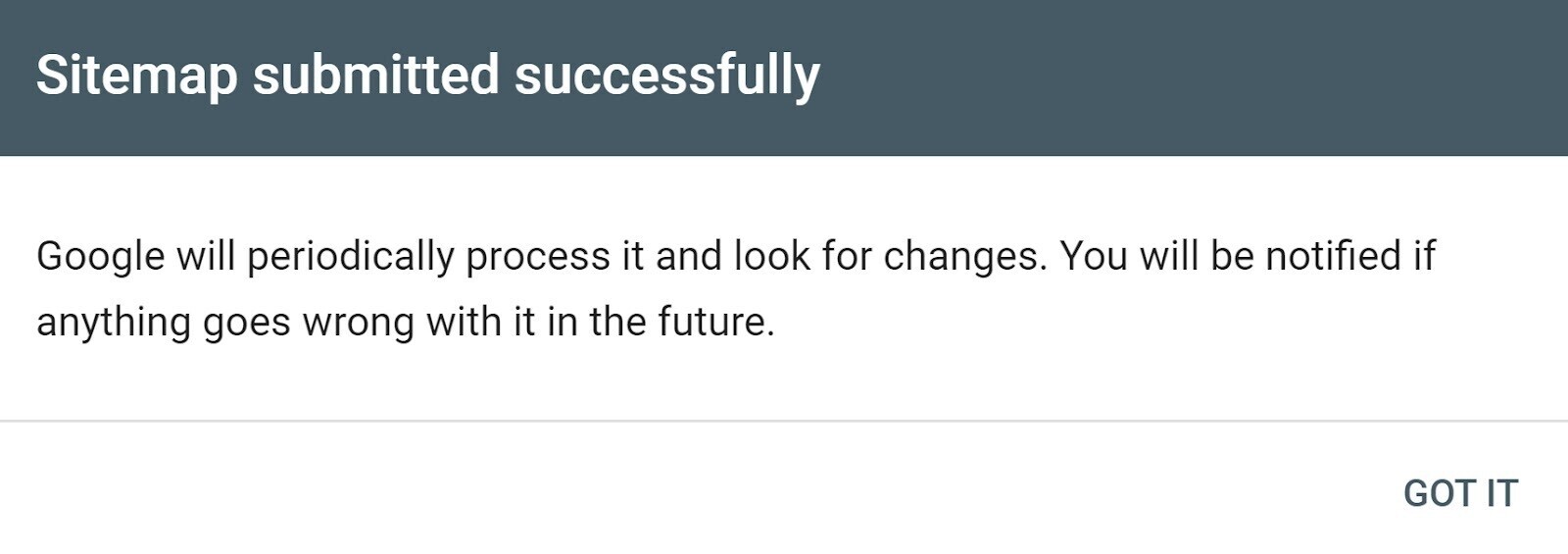
Additional studying: Submit a Sitemap to Google (in 4 Easy Steps)
Submit a Shopify Sitemap to Bing
Bing Webmaster Instruments helps you perceive your website’s presence on the Bing search engine.
You may submit your Shopify sitemap to Bing and assist it perceive your web site—it tells the search engine which pages you’d wish to get listed.
For that, you’ll want a verified website.
Go to Bing Webmaster Instruments and log into your account.
In case you’ve already verified the positioning on GSC, you possibly can import particulars and sitemaps instantly. In any other case, you possibly can comply with the guide verification steps under.
Enter your Shopify area and click on “Add.”
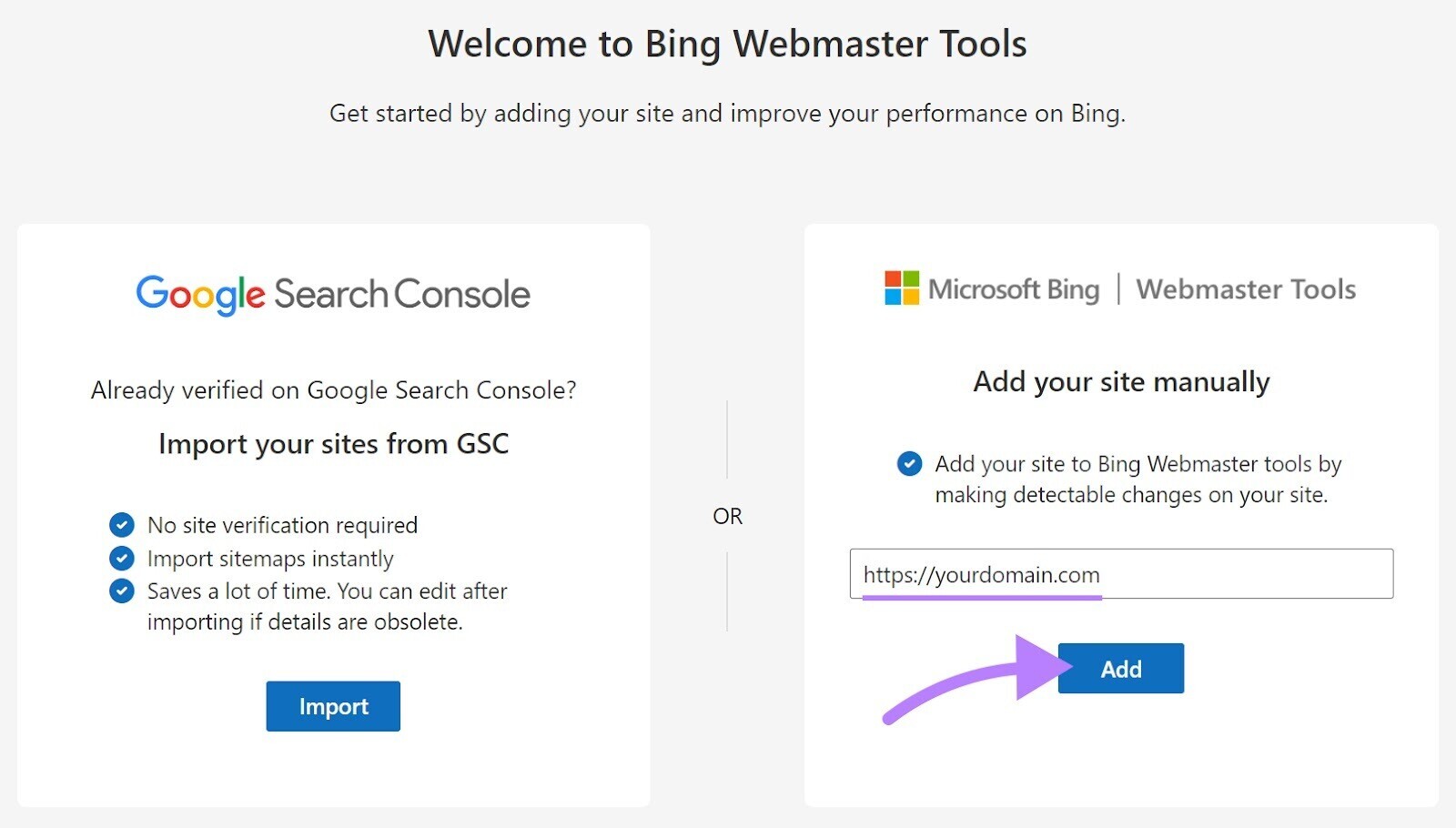
Within the verification, broaden the “HTML Meta Tag” part and duplicate the verification code.
There are different verification strategies, reminiscent of including an XML file. However the “HTML Meta Tag” possibility is the best one.
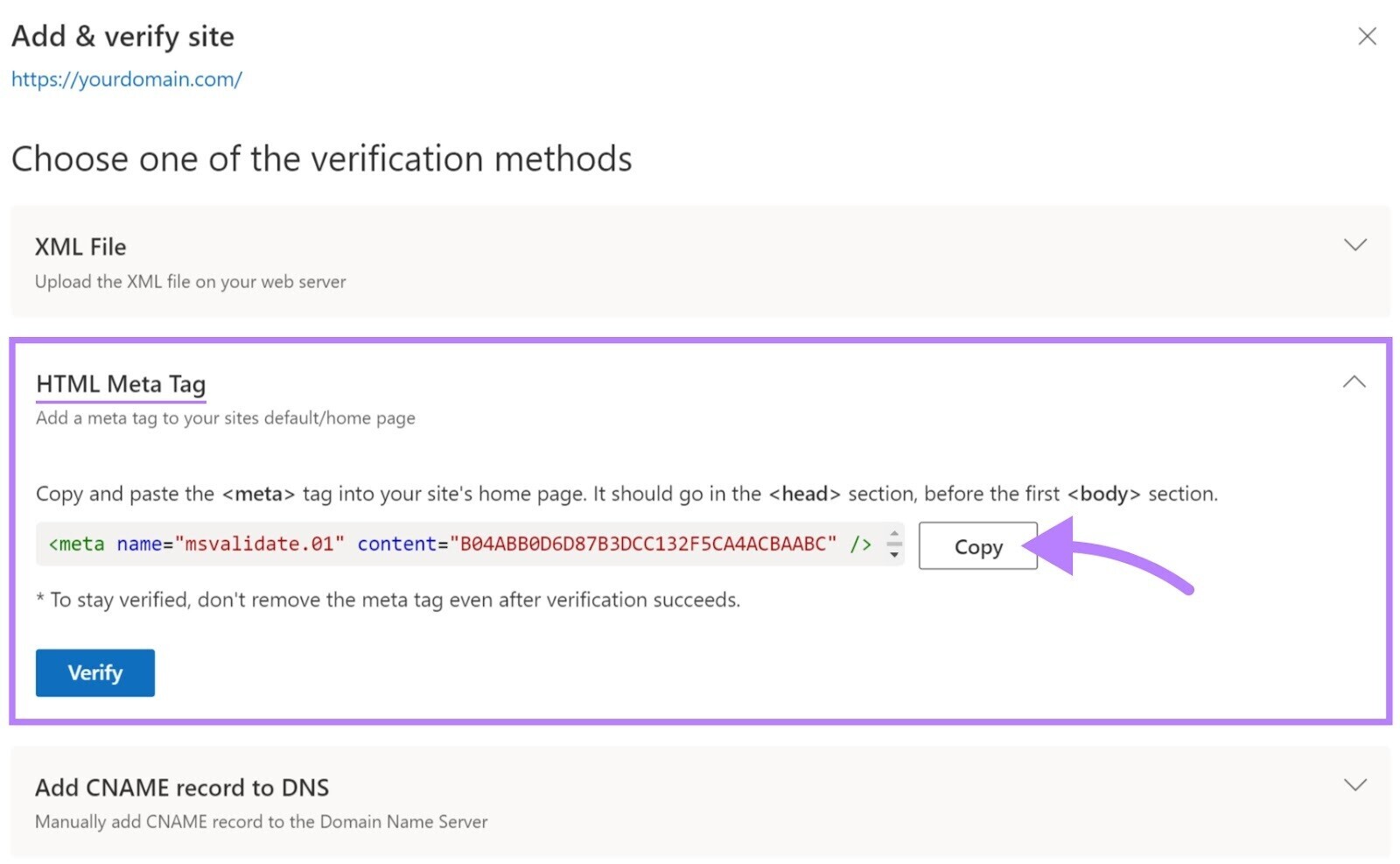
Now, comply with the steps talked about for the Google verification within the earlier part on including the meta code to the Shopify theme.liquid file. And confirm the positioning.
As soon as the verification is profitable, you possibly can submit your Shopify sitemap to Bing.
Click on “Sitemaps” within the left-hand menu of Bing Webmaster Instruments.
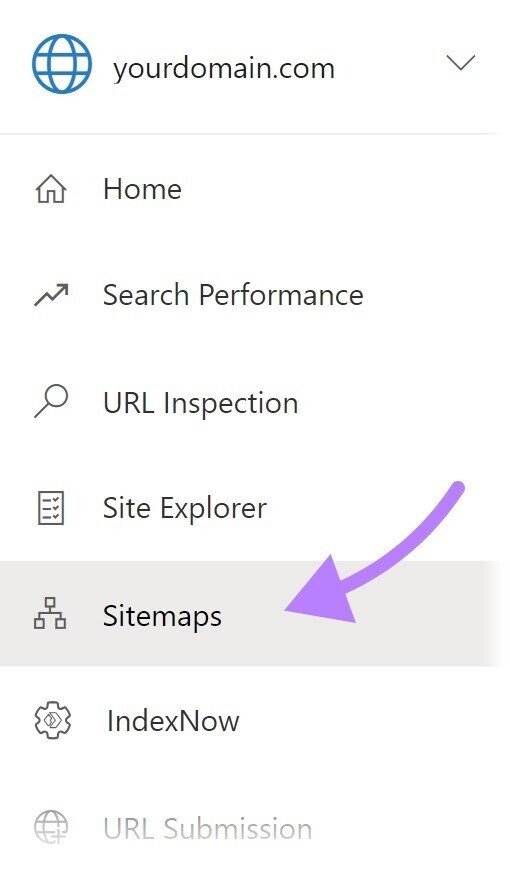
Within the high proper nook, click on “Submit sitemap.”
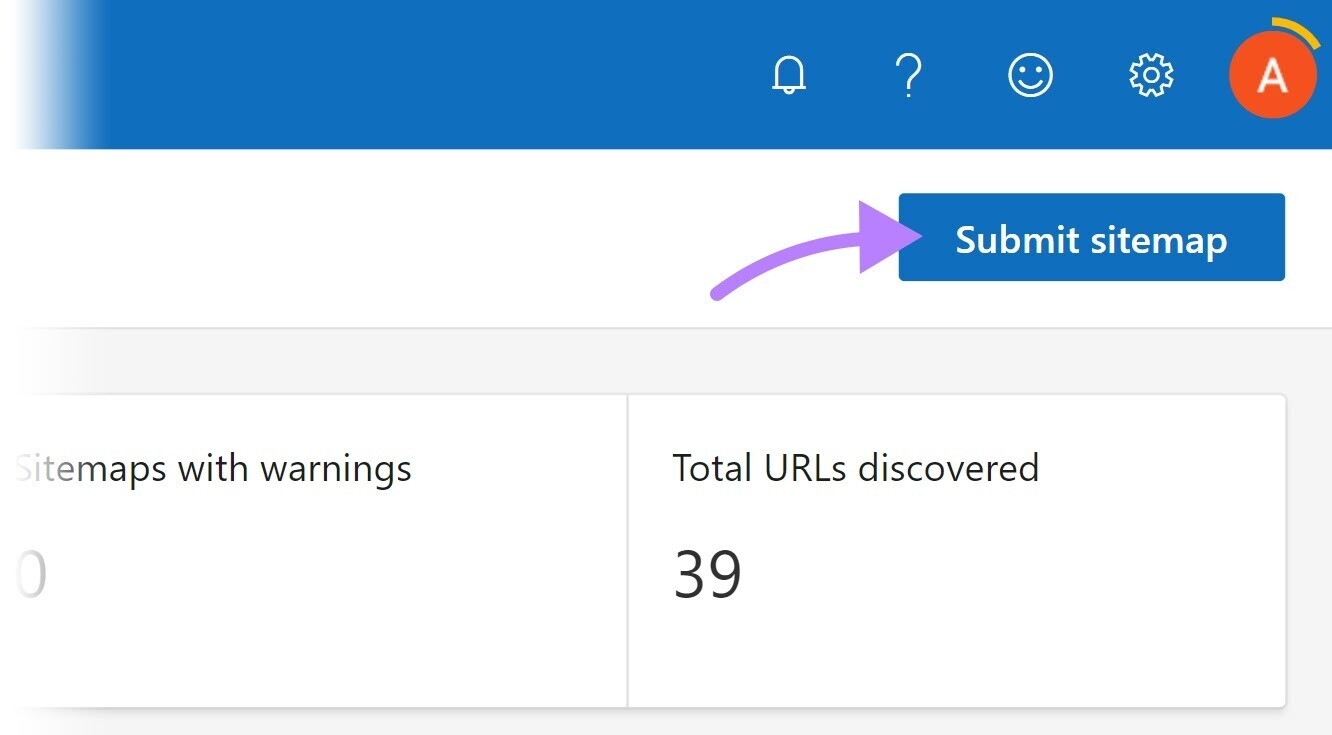
Enter the tackle of the Shopify sitemap within the pop-up window and click on “Submit.”
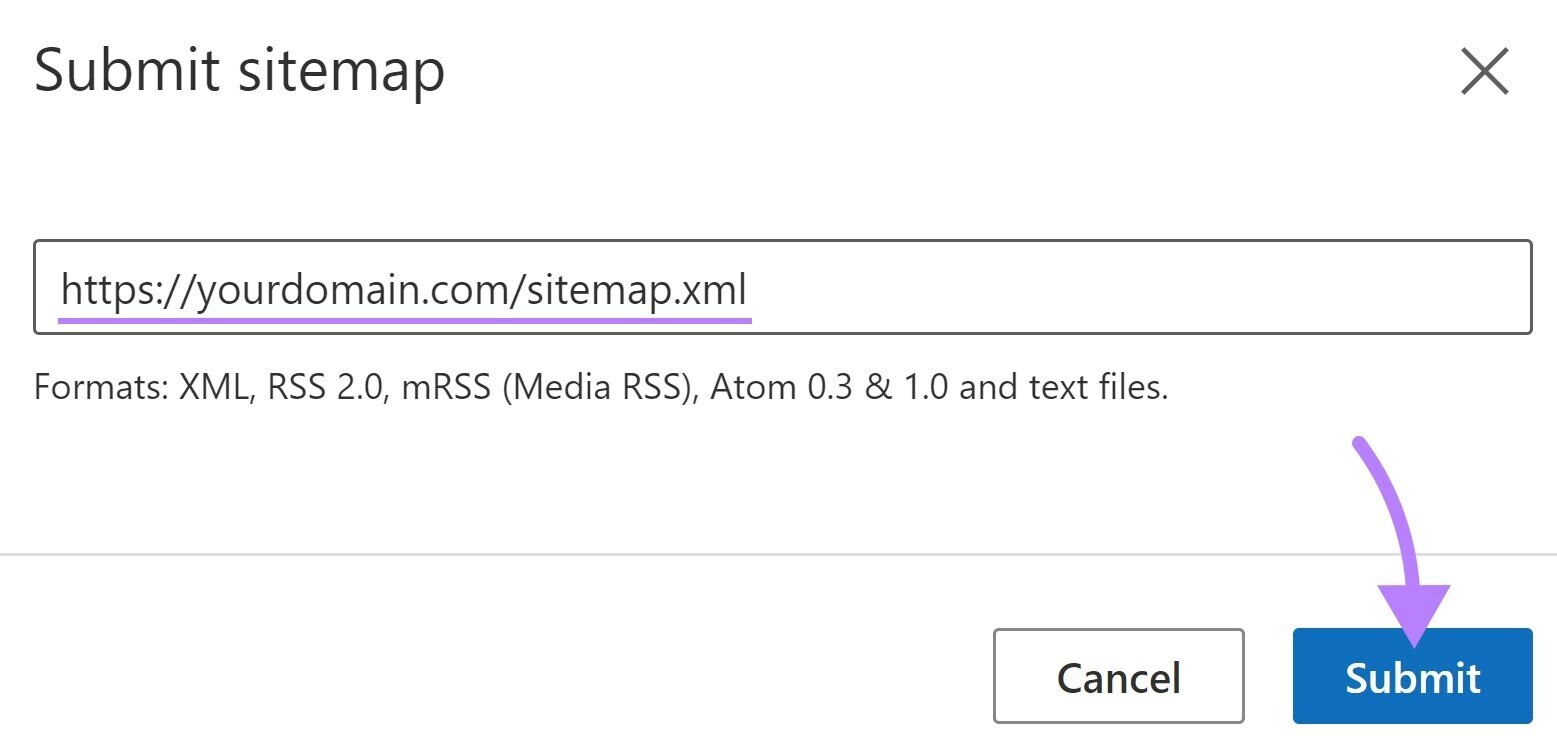
Many retailers face the “Could not fetch” error whereas submitting a Shopify sitemap.
If this occurs, it’s essential test whether or not your website is accessible to the general public (which means it’s not protected by a password).
Merely open the sitemap URL in a non-public browser window to see if you happen to can entry it.
Monitoring and Updating Your Shopify Sitemap
Your Shopify sitemap performs a vital half in your search engine optimisation efficiency. And retaining it updated and optimized for serps is crucial.
This may be difficult if you happen to’re utilizing customized sitemaps.
The Semrush Web site Audit software might help you discover and repair all of the vital points in your sitemap.
Open the software and comply with the Web site Audit configuration steps to create a challenge and run a website audit.
As soon as the audit is full, you’ll see a high-level look of your website’s technical search engine optimisation well being within the “Overview” report.
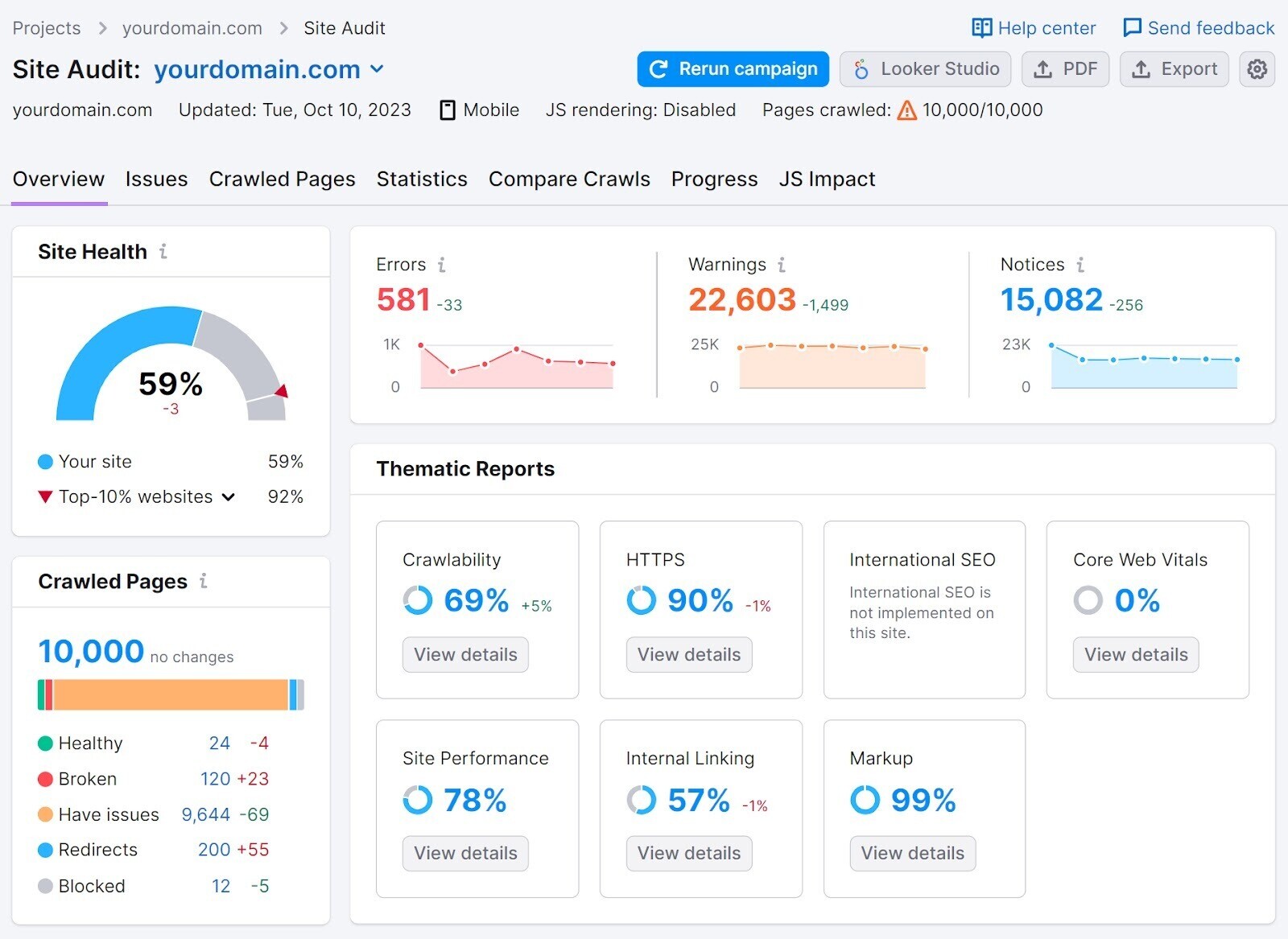
Now, click on the “Points” tab and enter “sitemap” within the search bar on the high.
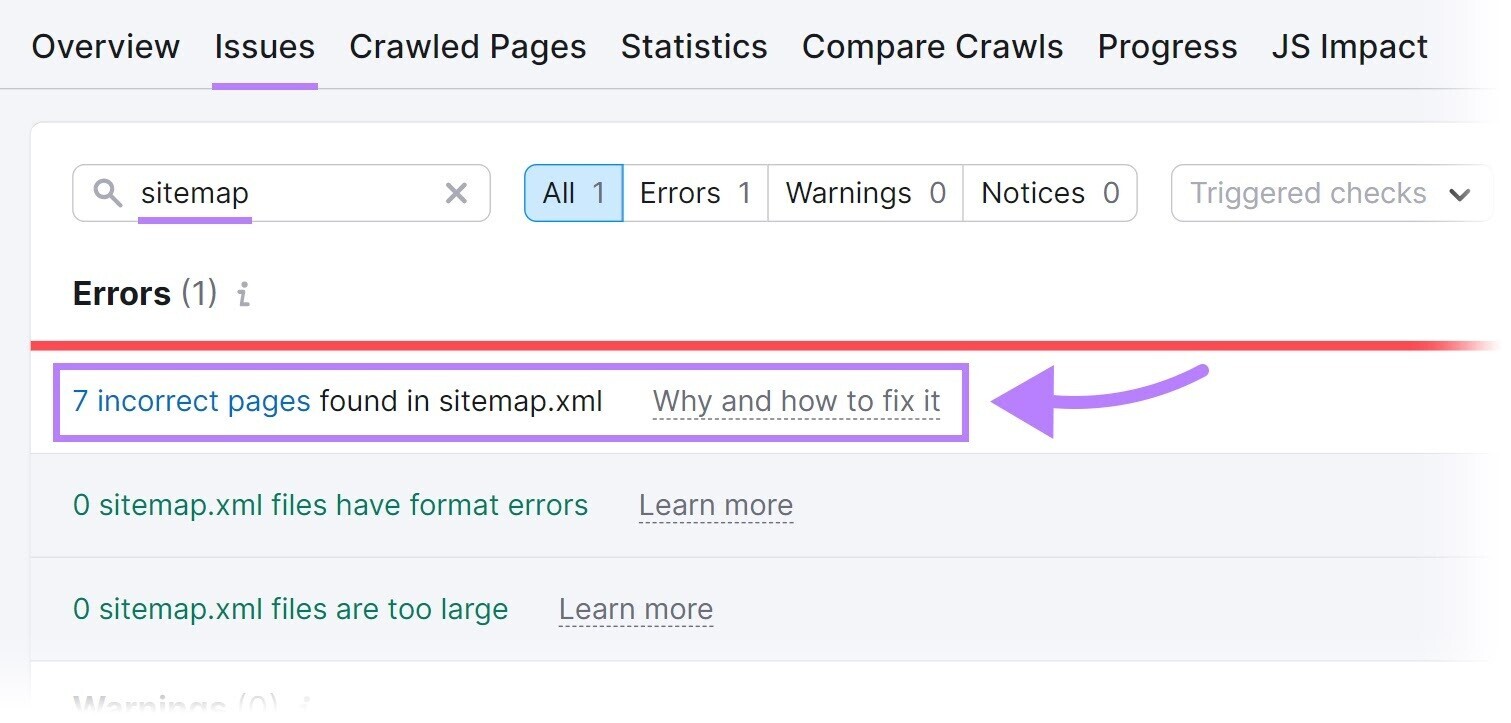
The software will now present you any sitemap-related points. Like these:
- Sitemap.xml not discovered
- Sitemap.xml recordsdata have format errors
- Incorrect pages present in sitemap.xml
- Sitemap.xml recordsdata are too giant
- Sitemap.xml not indicated in robots.txt
- HTTP URLs in sitemap for HTTPS
Hover over “Why and repair it” to be taught extra about a problem. And discover out what steps you possibly can take to deal with it.
Staying on high of any points will enable you preserve your Shopify website’s well being and search engine optimisation efficiency.
[ad_2]
Supply hyperlink
About us and this blog
We are a digital marketing company with a focus on helping our customers achieve great results across several key areas.
Request a free quote
We offer professional SEO services that help websites increase their organic search score drastically in order to compete for the highest rankings even when it comes to highly competitive keywords.
Subscribe to our newsletter!
More from our blog
See all postsRecent Posts
- What Is It & Tips on how to Do It December 7, 2023
- What It Is and The way to Use It December 7, 2023
- High 10 Content material Repurposing Instruments for 2024 December 7, 2023


